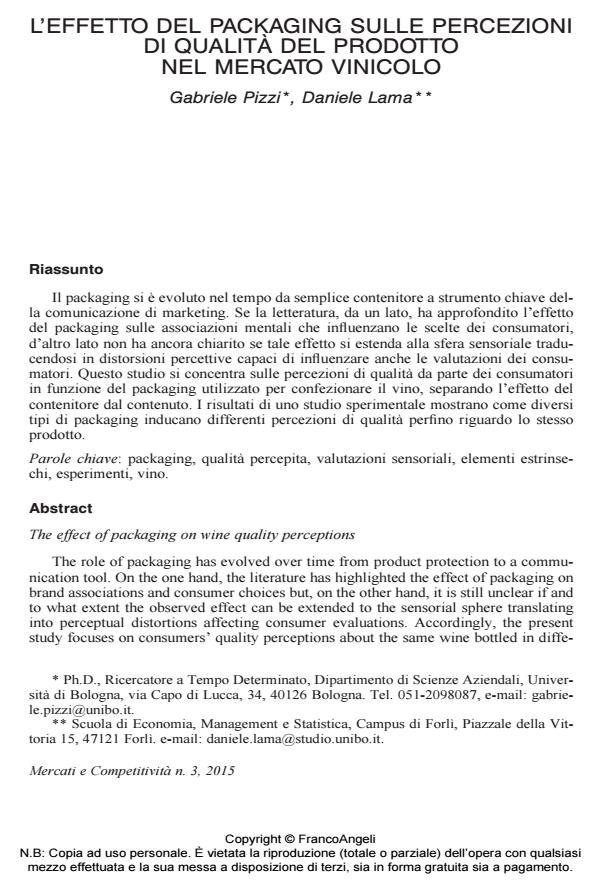L’effetto del packaging sulle percezioni di qualità del prodotto nel mercato vinicolo
Titolo Rivista MERCATI E COMPETITIVITÀ
Autori/Curatori Gabriele Pizzi, Daniele Lama
Anno di pubblicazione 2015 Fascicolo 2015/3
Lingua Italiano Numero pagine 22 P. 61-82 Dimensione file 510 KB
DOI 10.3280/MC2015-003004
Il DOI è il codice a barre della proprietà intellettuale: per saperne di più
clicca qui
Qui sotto puoi vedere in anteprima la prima pagina di questo articolo.
Se questo articolo ti interessa, lo puoi acquistare (e scaricare in formato pdf) seguendo le facili indicazioni per acquistare il download credit. Acquista Download Credits per scaricare questo Articolo in formato PDF

FrancoAngeli è membro della Publishers International Linking Association, Inc (PILA)associazione indipendente e non profit per facilitare (attraverso i servizi tecnologici implementati da CrossRef.org) l’accesso degli studiosi ai contenuti digitali nelle pubblicazioni professionali e scientifiche
Il packaging si è evoluto nel tempo da semplice contenitore a strumento chiave della comunicazione di marketing. Se la letteratura, da un lato, ha approfondito l’effetto del packaging sulle associazioni mentali che influenzano le scelte dei consumatori, d’altro lato non ha ancora chiarito se tale effetto si estenda alla sfera sensoriale traducendosi in distorsioni percettive capaci di influenzare anche le valutazioni dei consumatori. Questo studio si concentra sulle percezioni di qualità da parte dei consumatori in funzione del packaging utilizzato per confezionare il vino, separando l’effetto del contenitore dal contenuto. I risultati di uno studio sperimentale mostrano come diversi tipi di packaging inducano differenti percezioni di qualità perfino riguardo lo stesso prodotto.
Parole chiave:Packaging, qualità percepita, valutazioni sensoriali, elementi estrinsechi, esperimenti, vino
Gabriele Pizzi, Daniele Lama, L’effetto del packaging sulle percezioni di qualità del prodotto nel mercato vinicolo in "MERCATI E COMPETITIVITÀ" 3/2015, pp 61-82, DOI: 10.3280/MC2015-003004